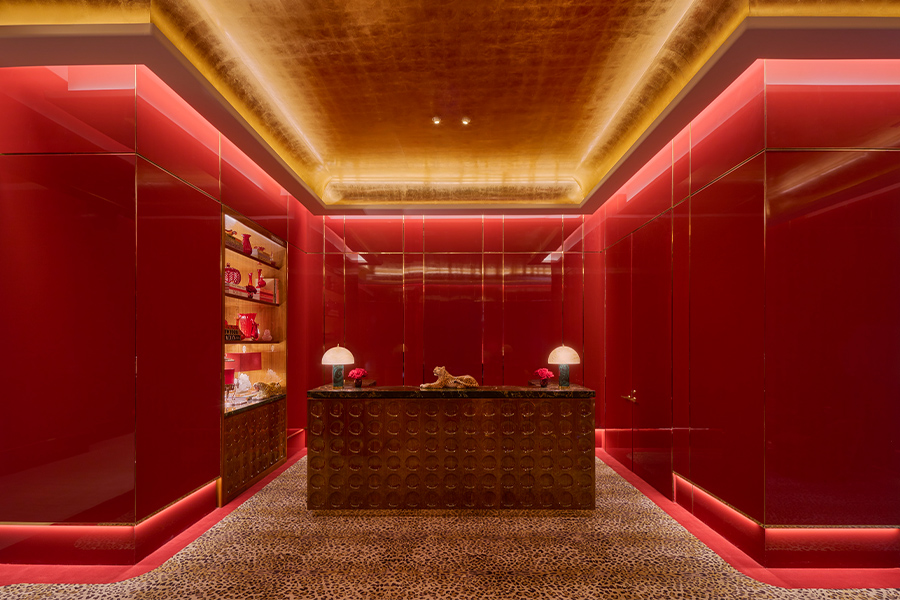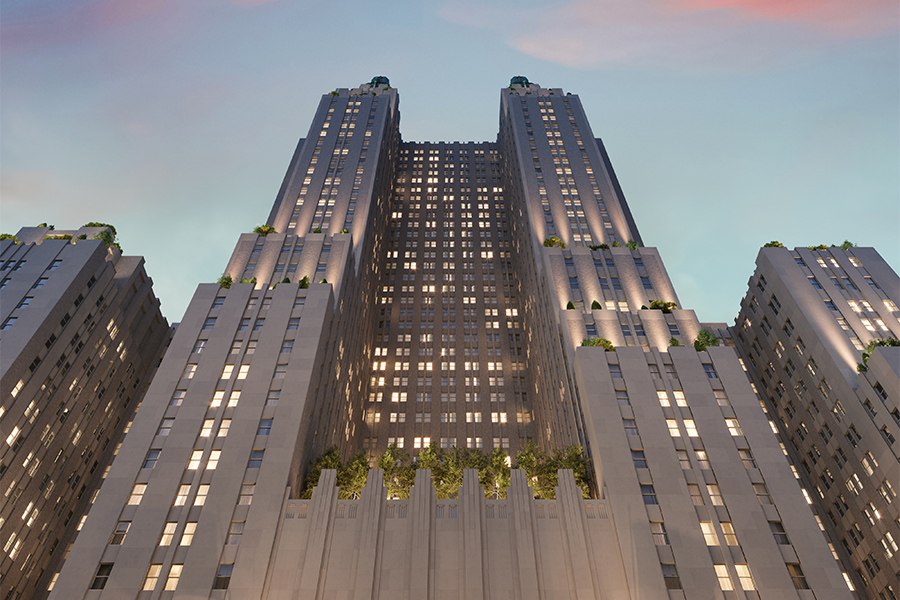When it opened in 1886, the landmark Gran Hotel Inglés, originally designed by Juan José Sánchez Pescador, was history in the making: not only was it located on the first street in Madrid to receive electricity, it was also the first hotel to feature a restaurant. To revive the neglected building, Rockwell Group Madrid set out to “celebrate the hotel’s past in a contemporary way,” notes studio leader Eva Longoria.
With the help of the clients, the firm collected “old advertisements and newspaper stories produced when the hotel first opened, as well as looked to cultural figures like Virginia Woolf, Henri Matisse, and famous Spanish bullfighters who passed through over the years,” Longoria explains. It became clear that, during its heyday, the hotel was a “place where people came to meet and talk about literature and the ideas of the time,” she says. “We wanted to return to that era, so we designed a lobby as a gathering place with a central bar, groupings of seating, and a library.”
Upon arrival, guests are immediately drawn to a glistening oval bar beckoning from the entrance. An Art Deco vision in ebony and gold, it’s flanked by original uplit cast iron pillars and antiqued mirrors with vinyl decals of Belle Époque ladies and gents. “The guest is immediately transported to the past—the 1880s and 1930s, when the hotel was at its height,” says Longoria. Wood flooring laid out in a chevron pattern, velvet draperies, silk area rugs, leather sofas, and restored chandeliers all contribute to the residential-style gathering space, she adds. That elegant but relaxed feeling continues in Lobo 8 restaurant. Informed by a grand British country estate, it is outfitted with blue and gold tones and both modern and antique-inspired lighting.
In contrast to the drama in the public areas, the 48 guestrooms are symphonies in white anchored with jewel-toned accents. That’s not to say there aren’t surprises: a slipper clawfoot bathtub presents itself as an objet d’art in the bedroom. Yet, some are meant to be discovered, like replicas of vintage hotel postcards with beautiful handwritten notes that the designers found and transformed into wallpaper—a clever moment in the closets.
Despite such special touches, the lobby remains Longoria’s favorite aspect of the hotel. “To have this very large, very lively space is new for Madrid,” she says. Part of the allure was to recreate the salon-like feel that encouraged rigorous intellectual discourse and cultural energy at the hotel’s peak. The project was, she continues, “a design of intent, not just colors and finishes.” ;



